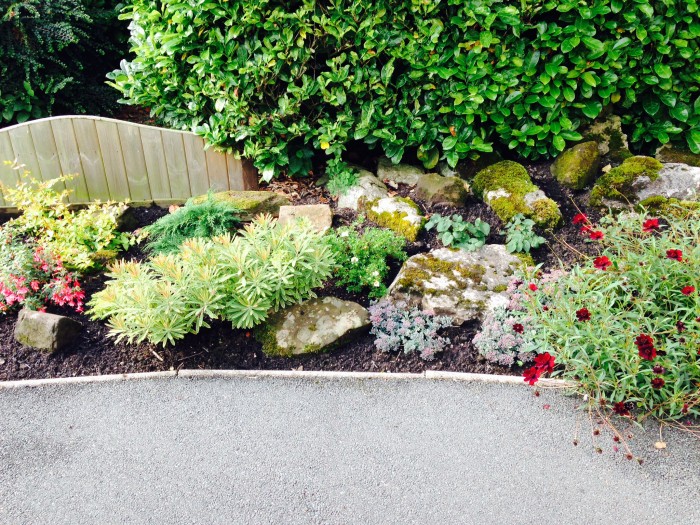
Developing and Planting a New Border
This article lists our top 8 key steps for developing and planting a new border in your garden, however if you have any futher queries, contact one of our frinedly team members for further guidance:
1. Marking Out
Identify the location and size of the border that will best suit the range of plants you want to grow. TIP – Use your hosepipe to layout the position of the border’s front edge.
2. Clearing the Site
Remove all existing growth – remove weeds like dandelions and bindweed by hand to ensure that no roots persist. Stones or other debris should also be cleared away.
3. How many Plants will there be?
When deciding how many plants to use, we use old plant pots spaced around on the border to get an indication of appropriate sizes and heights and to decide the front and backorder of the border plants. This helps us get the right spacing. For shrubs, aim for an average of three plants per square metre and for perennials 5 per square metre. This obviously depends on the variety and size of the specimens being used.
4. Removing and Storing Turf
If you remove good quality turf, keep it aside to re-use elsewhere in the garden. Poor quality turf, however, can be stacked, grass side down and left for 18 months. It will then turn into good quality loam and can be used as a soil improver
5. Feeding your Soil
To ensure long term planting health, you need to decide whether the soil structure needs to be improved. TIP – Adding grit to clay soils or pelleted chicken manure provides better drainage.
6. Making Planting Holes
When digging out plant holes, we make the pit about twice the size of the rootball that will be going into it. We then incorporate large amounts of compost and fertiliser and water the plants well. Topdressing the remaining un-dug soil with compost and mulch can help suppress weeds.
7. Plant Establishment
When planting, ensure the correct aspect, planting density and soil quality as this gives the plants a healthy start. Then water the plants as necessary. Tease apart badly congested rootballs to add growth and water dry ones thoroughly before planting.
8. Finishing Touches
When the new border is planted mark out an edge. Keep the plants cared for by watering them and keeping the soil weed-free. You can then enjoy your new planted border.
Having borders in your garden can add variety and interest to your garden so if you would like our assistance in helping you to develop and to plant your new border then please don’t hesitate to contact us. To stay up to date with our latest projects follow us on Facebook.
